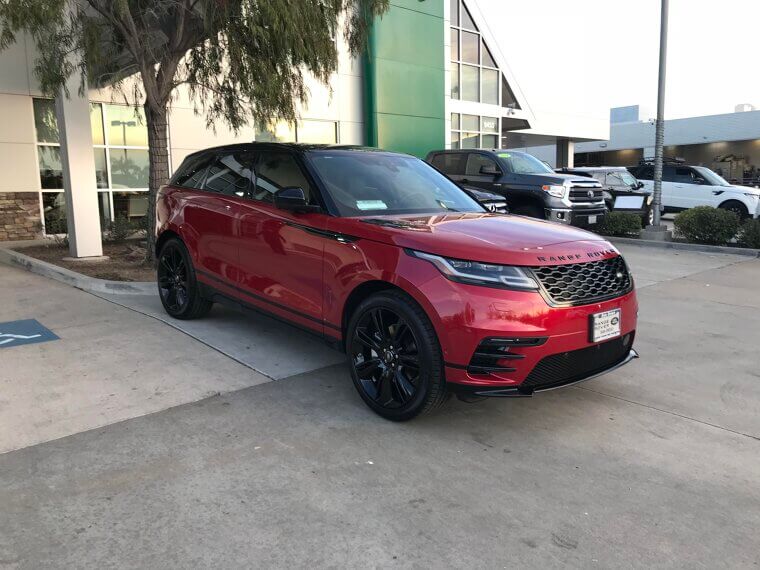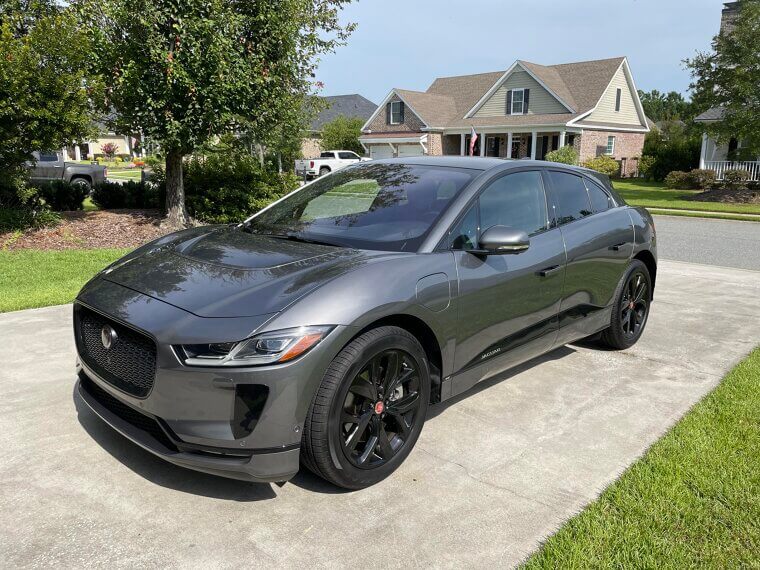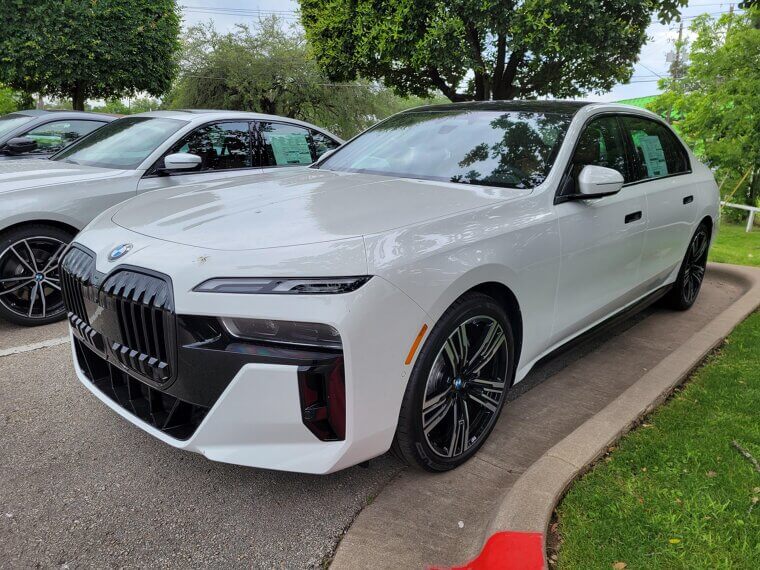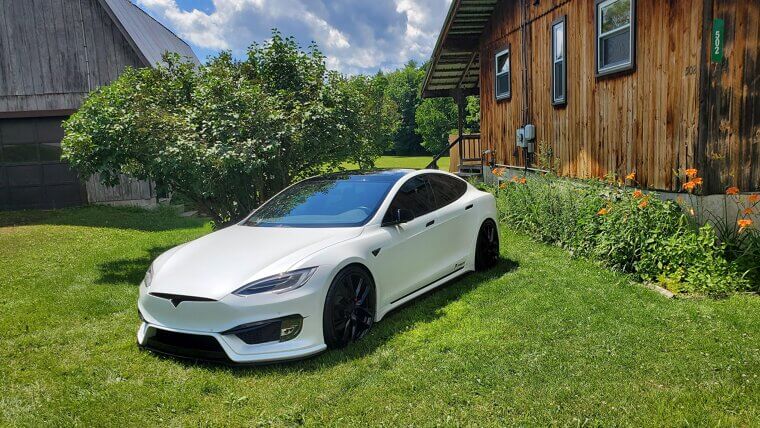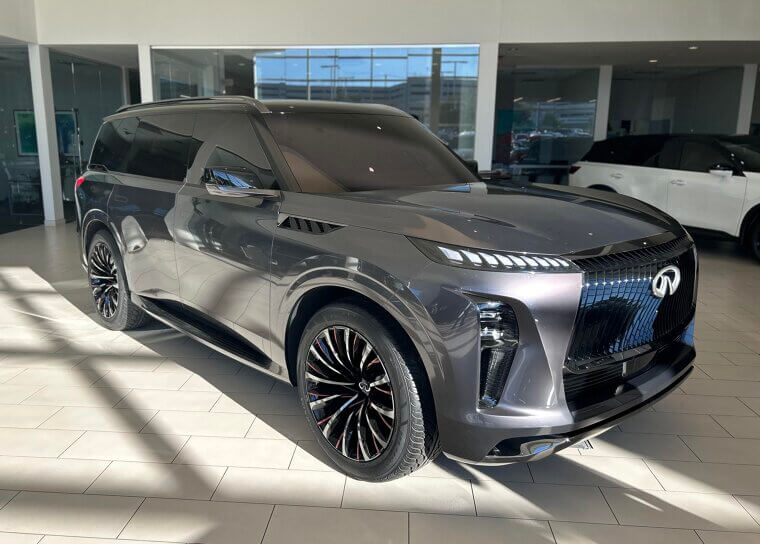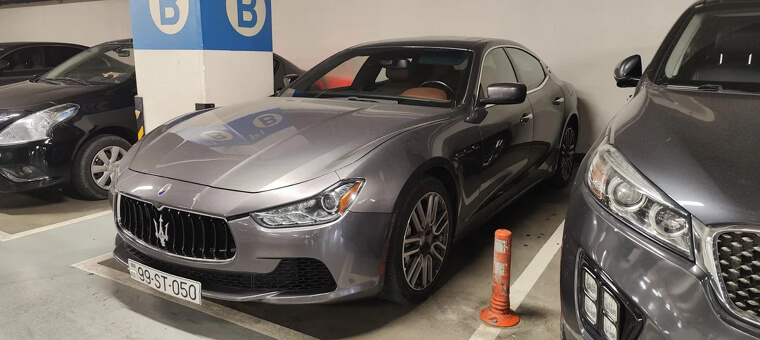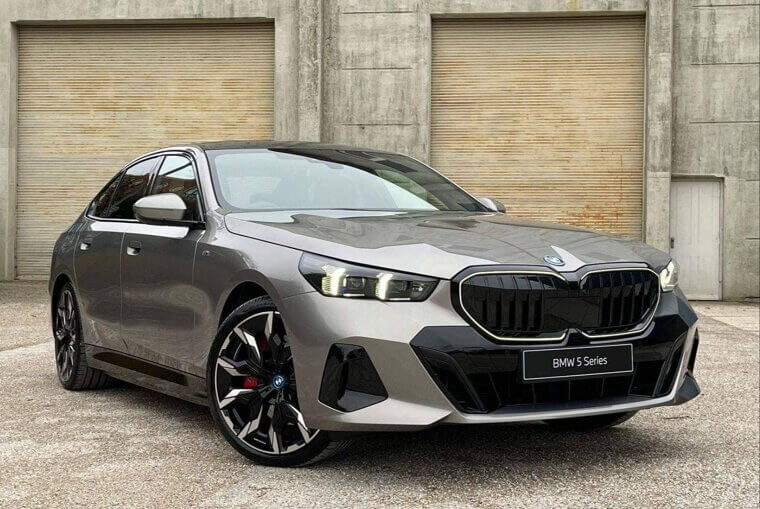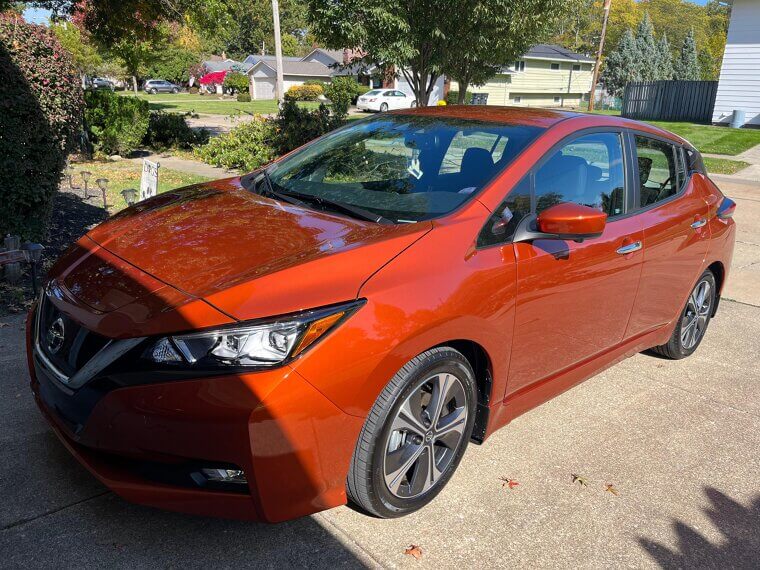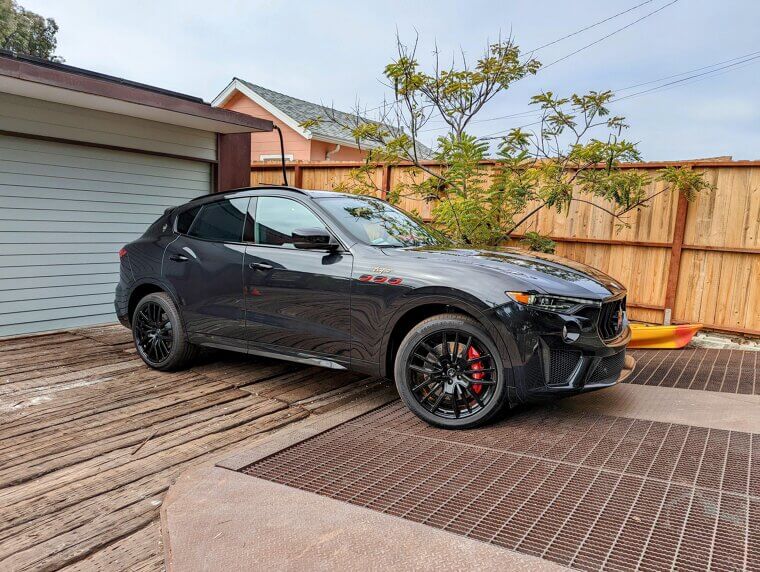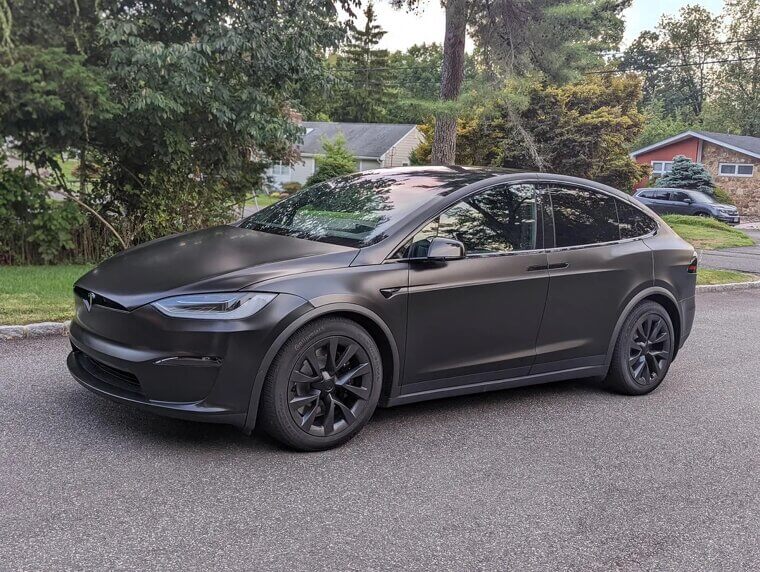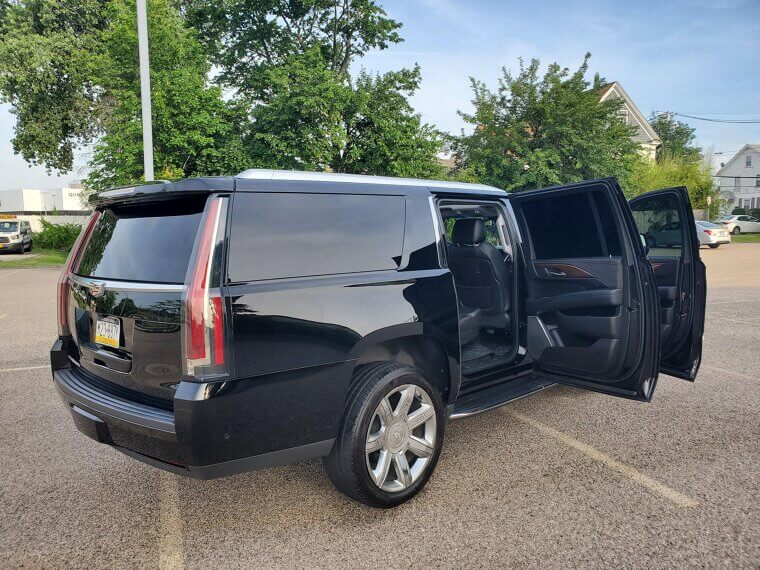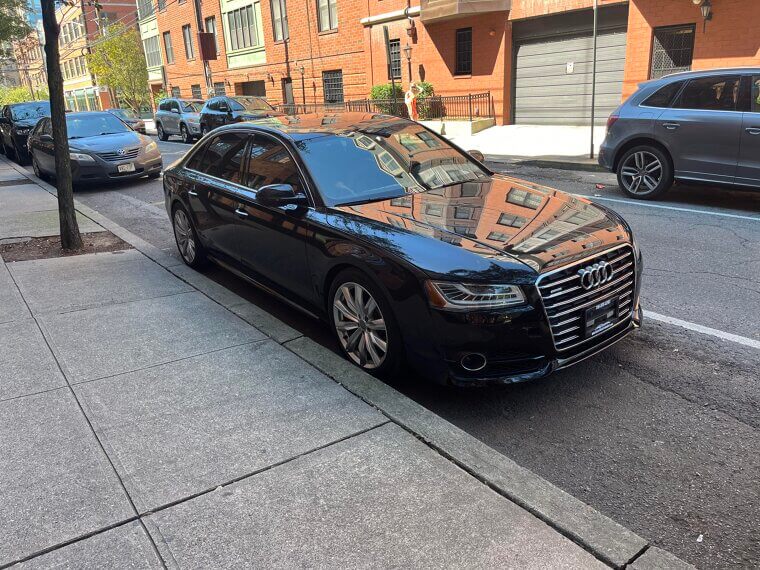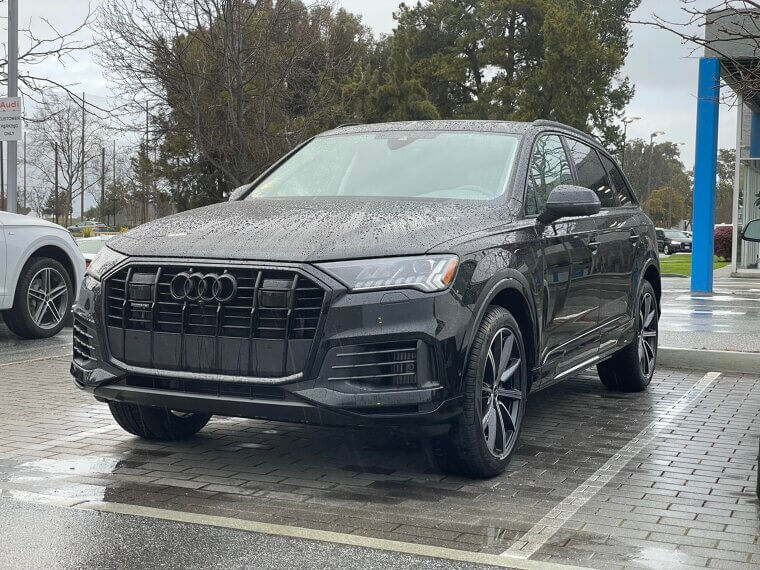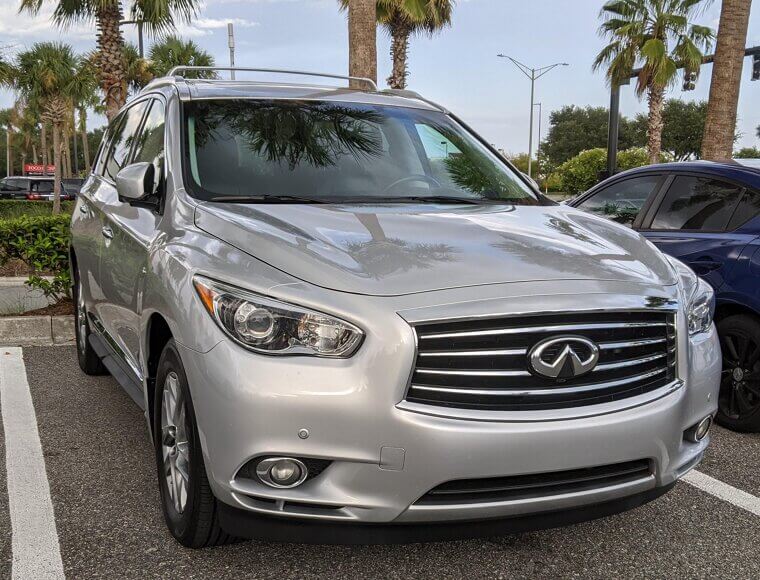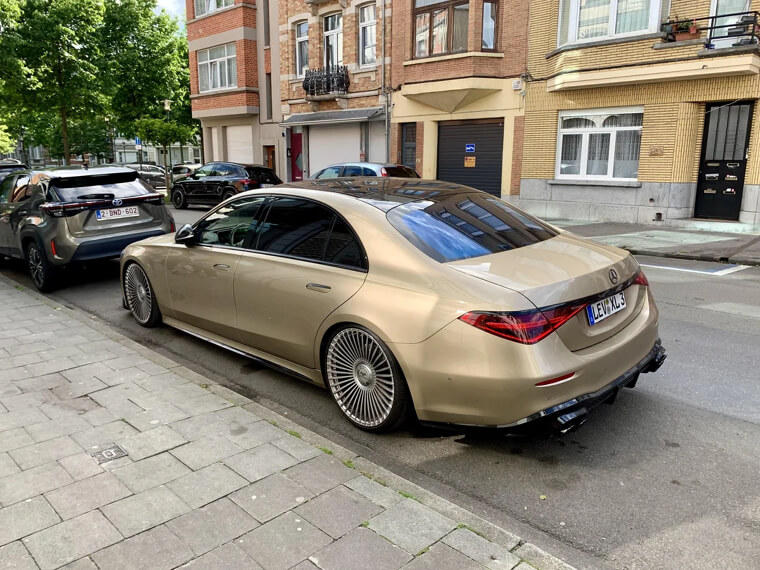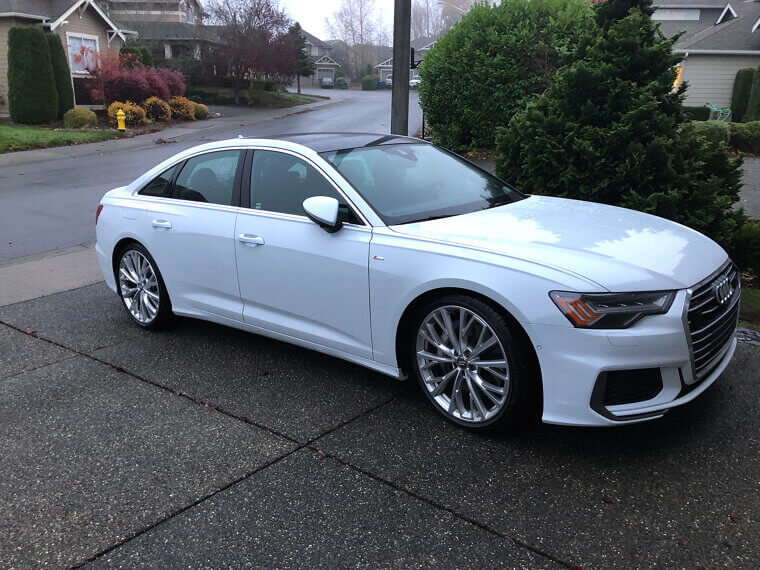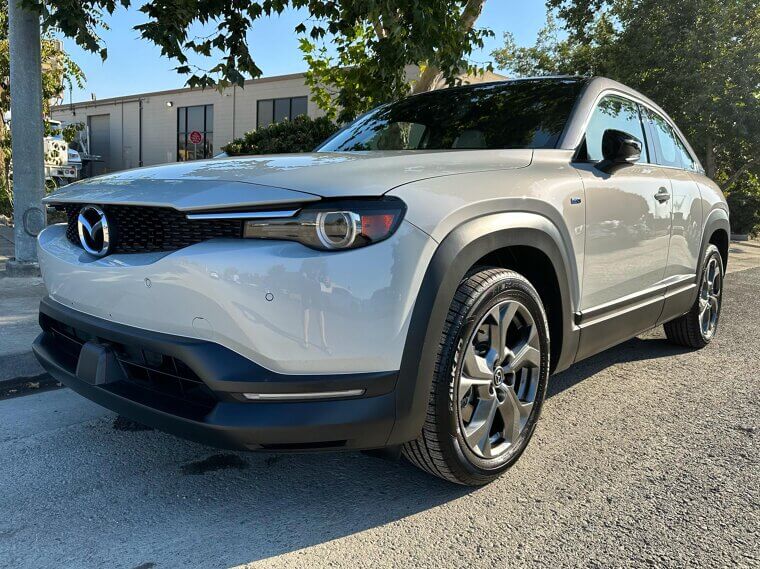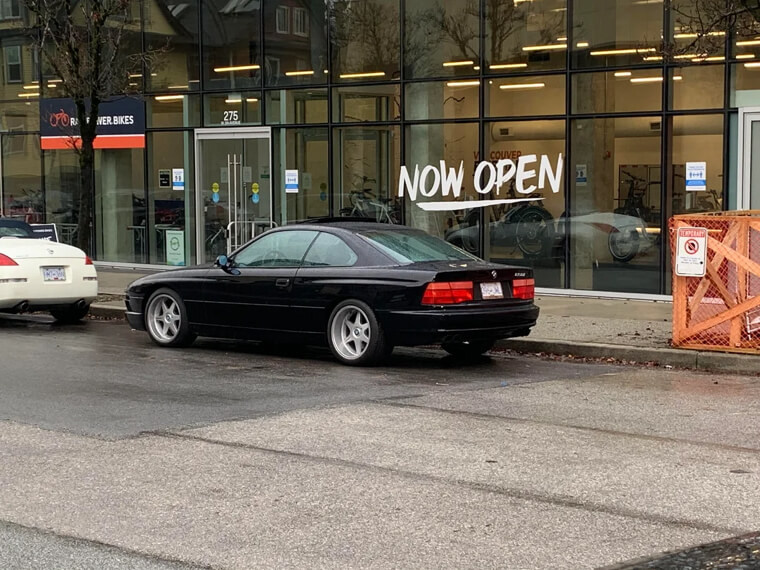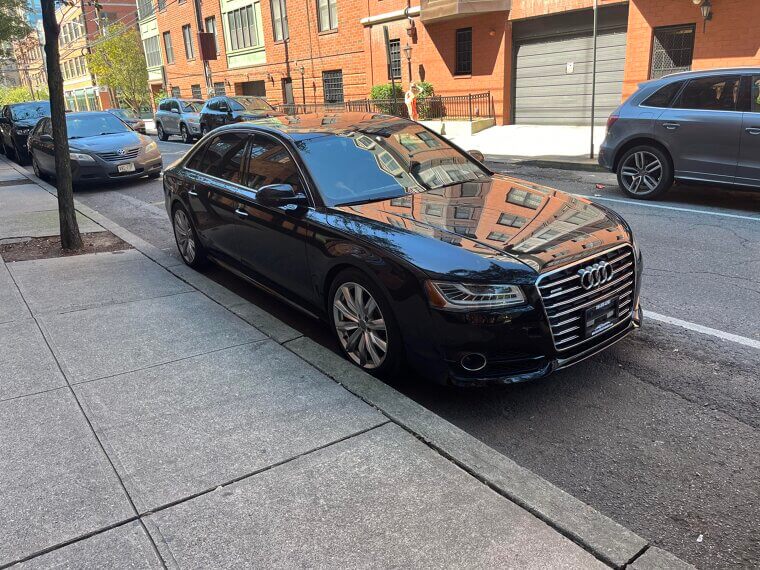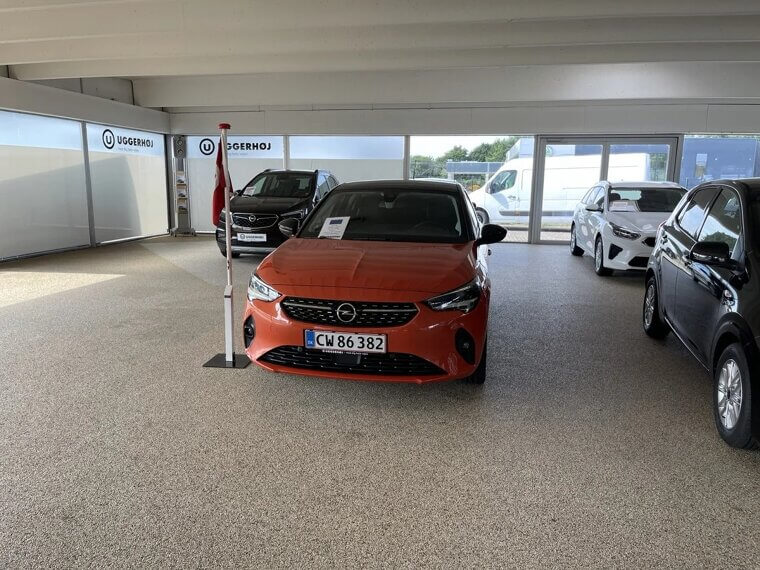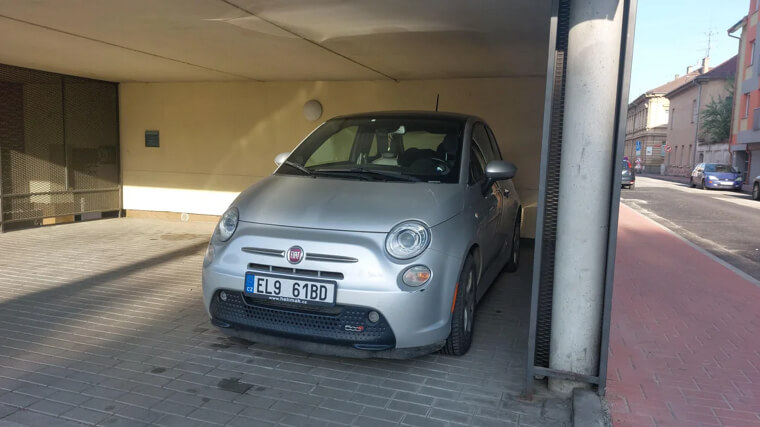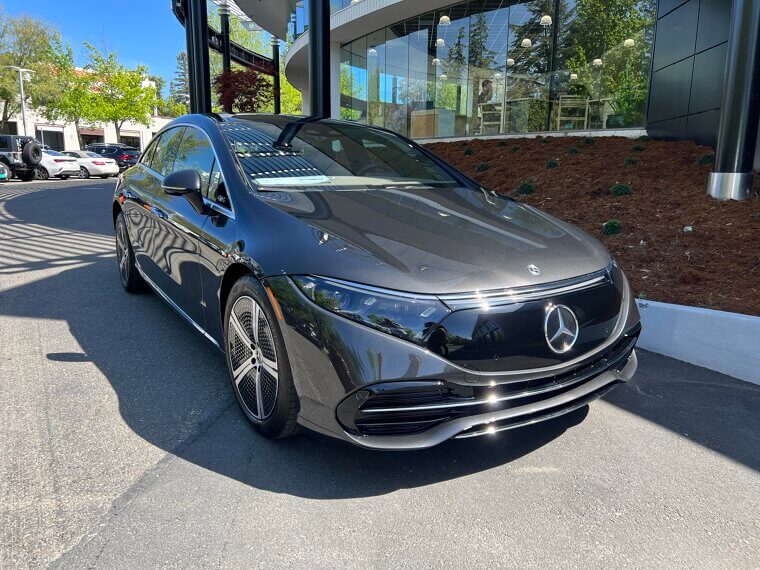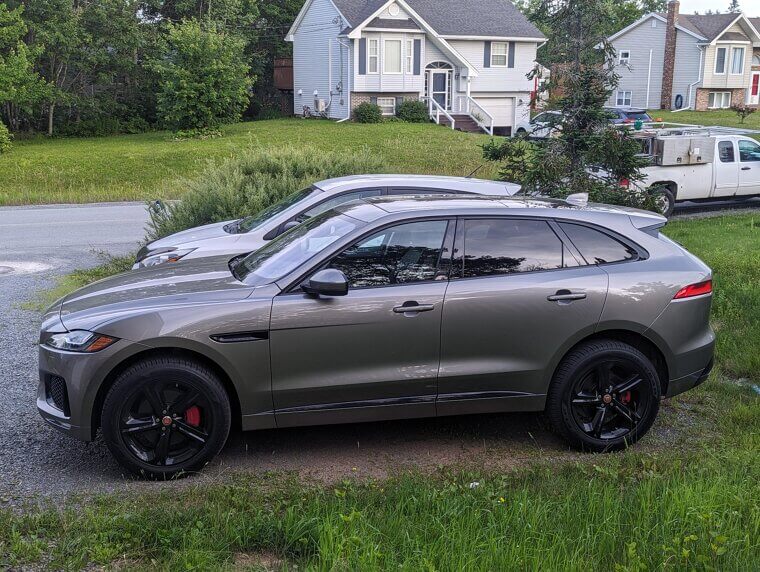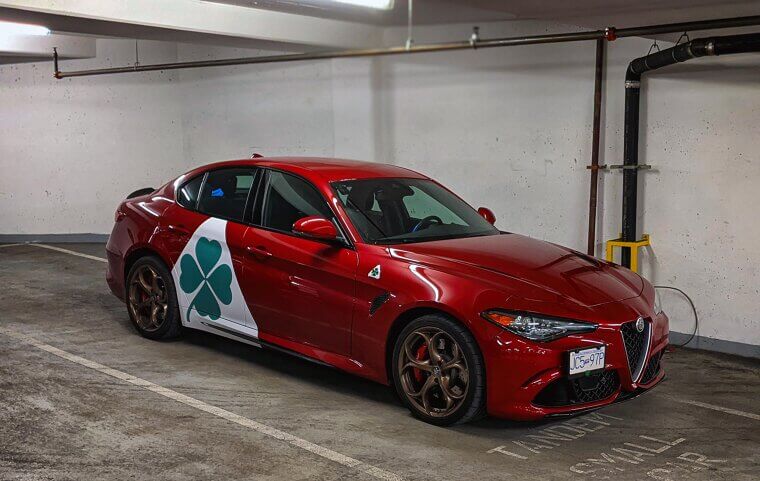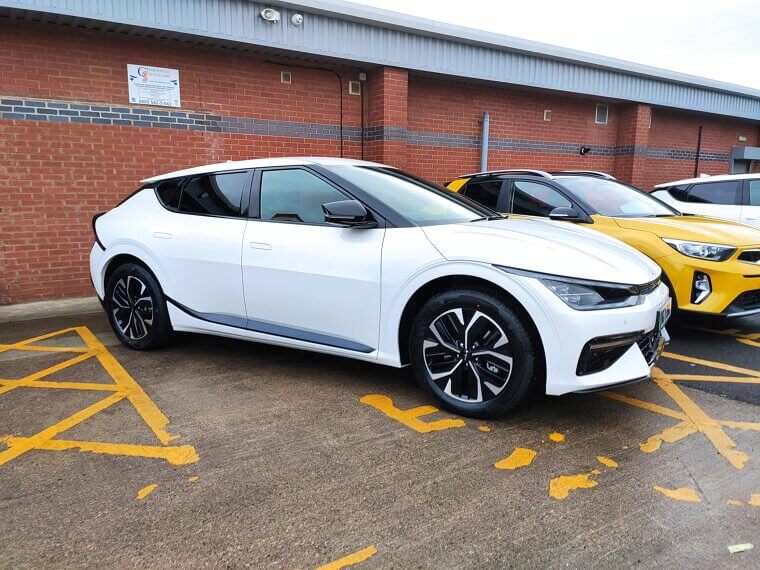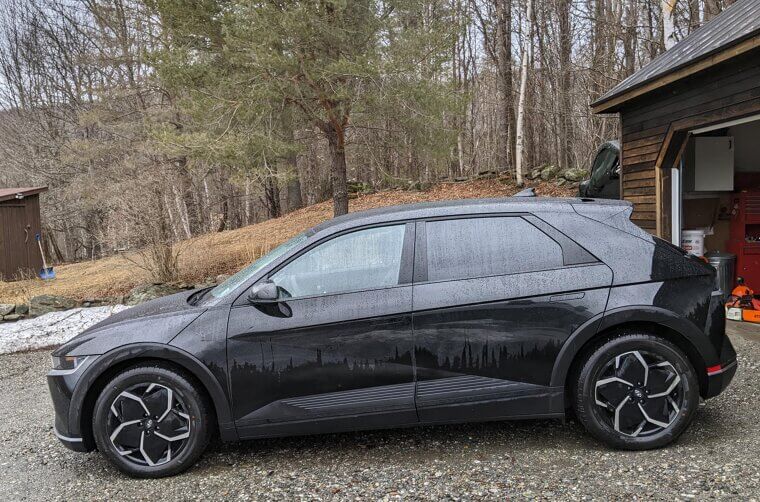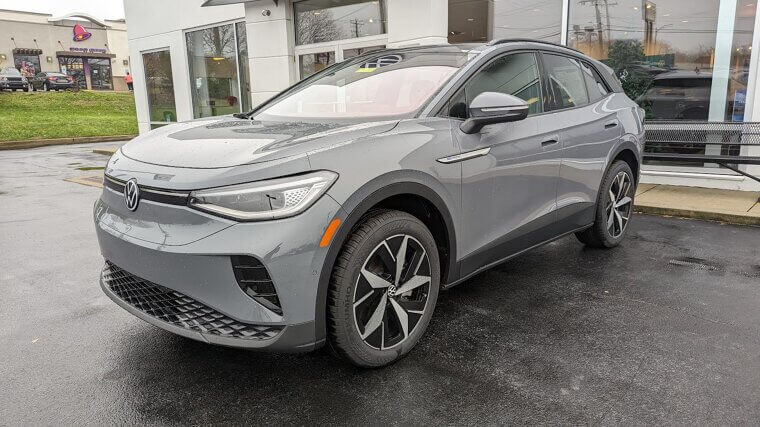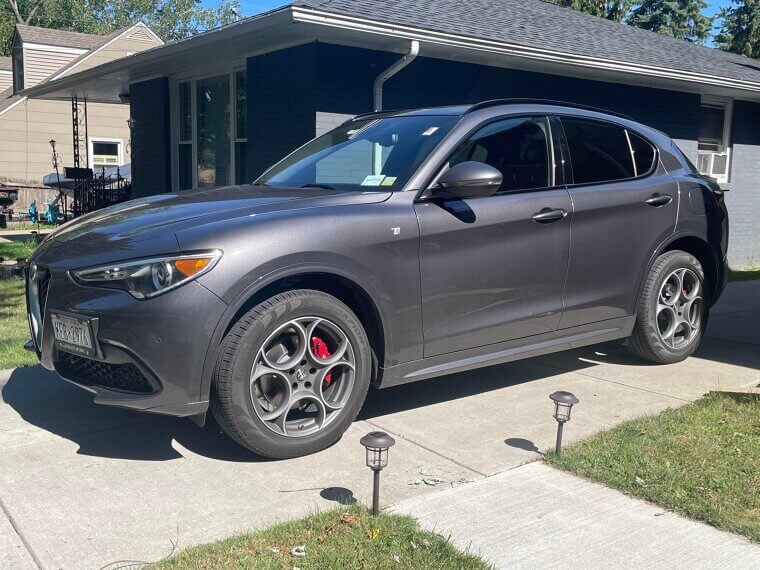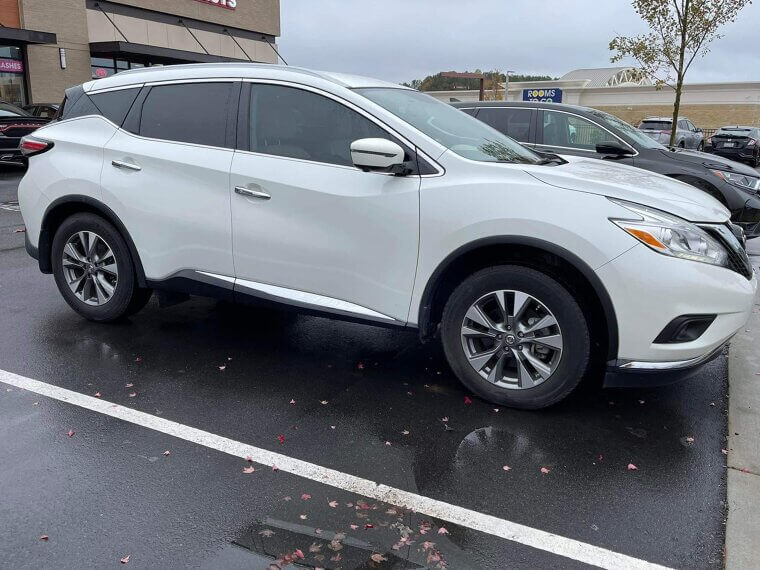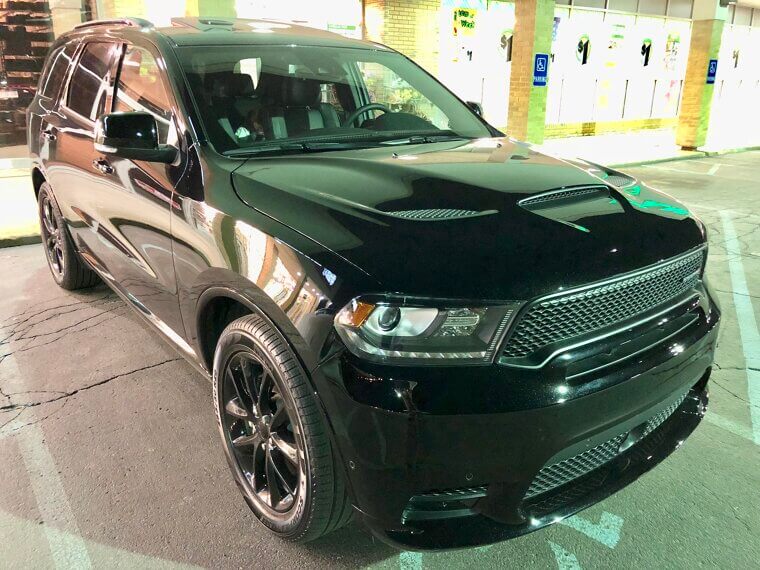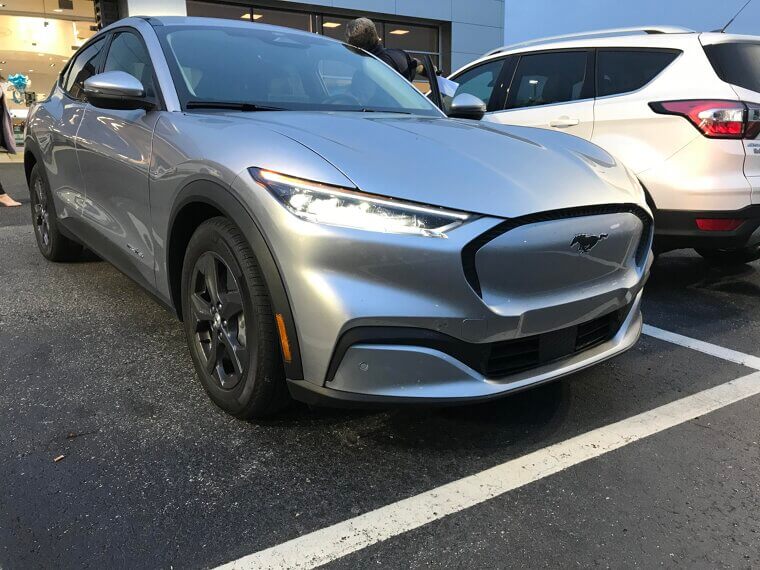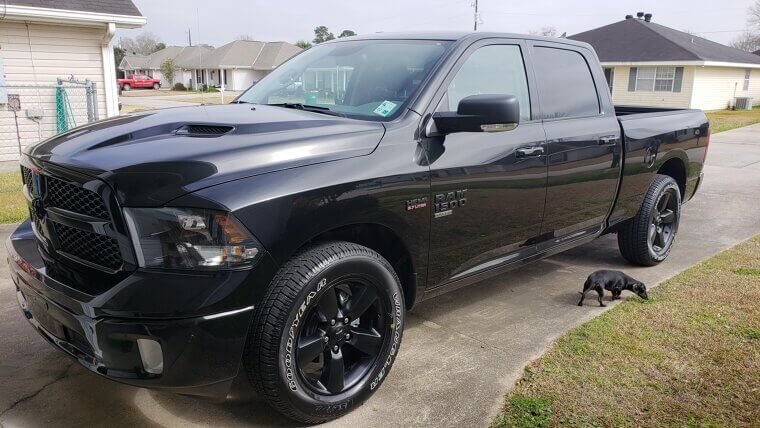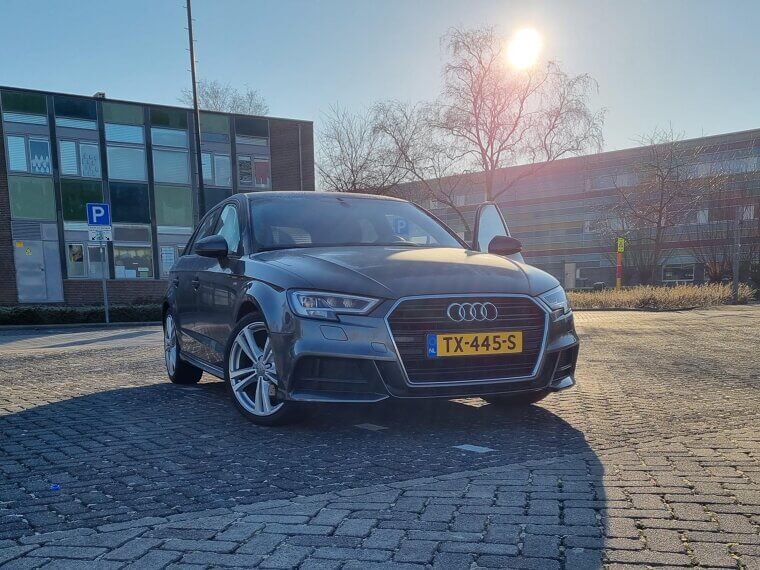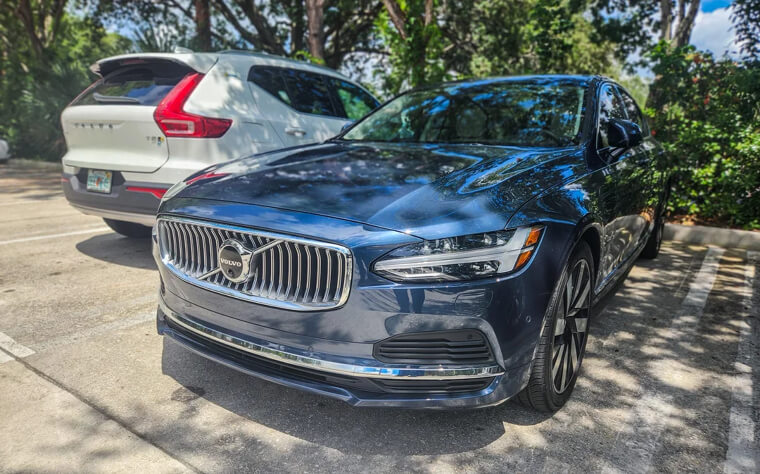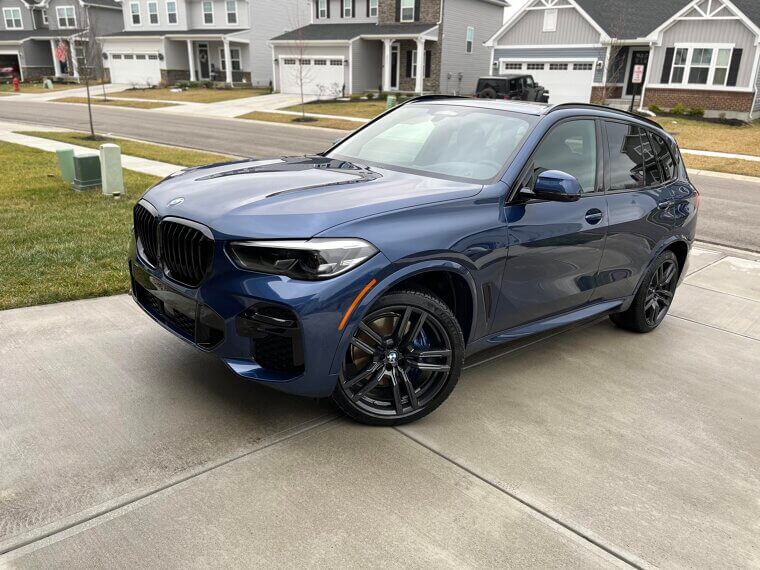Land Rover Range Rover
The Land Rover Range Rover is one of the most enduring nameplates on this list, widely regarded as The SUV with a capital T. Of course, popularity can only account for so much, and while the Range Rover is certainly a capable vehicle, its expensive cost of maintenance and occasional issues with reliability have caused it to depreciate heavily.
Jaguar I‑PACE
Jaguar has long been one of Britain’s premier luxury automakers, so you can expect it to never be too far behind current trends. The I-PACE is their take on an all-electric luxury vehicle, an SUV with incredible range, performance, and supreme comfort. Unfortunately, even a prestigious brand like Jaguar isn’t immune to the EV tech-race, and the I-PACE unfortunately loses around 72.2% of its total value over just 5 years.
BMW 7 Series
BMW occupies a similar space to Jaguar, though the former is arguably the more popular of the two. The 7 Series is a popular luxury sedan, a stunning vehicle that promises maximum enjoyment and comfort… provided you can look past the 67% loss of value over just 5 years.
Tesla Model S
The Model S is one of Tesla’s most popular models, an all-electric sedan with long-range capabilities, great performance, and a wealth of advanced features all designed to enhance your driving experience. Unfortunately, EVs often find themselves drawing the short end of the stick when it comes to depreciation rates, and the Model S is no exception.
Infiniti QX80
The Infiniti QX80 was recently redesigned for the 2025 and 2026 model years, and is now sleeker than ever. Unfortunately, that only reinforces its existing issues with depreciation. As a full-size luxury SUV, its high purchase price and high running costs often discourage reselling, and with demand low enough as it is, these new redesigns have only crippled previous models even more.
Maserati Ghibli
Featuring timeless design sensibilities, impeccable performance, and luxurious comfort levels, the Ghibli has consistently ranked as one of Maserati’s top nameplates. Unfortunately, as an exotic luxury brand, parts and servicing don’t come cheap, which has led to a depreciation rate of nearly 65% over 5 years.
BMW 5 Series Hybrid
As a hybrid vehicle, the BMW 5 Series offers a great balance between performance and practicality thanks to its gasoline engine coupled with an electric motor. However, that also means it often gets hit by the same issues suffered by EVs, including technological obsolescence, which has led to a 64.7% depreciation rate over 5 years.
Nissan LEAF
The Nissan LEAF was one of the very first mass-market EVs to hit the road, and the nameplate has only continued to evolve and innovate in the years since its arrival. Unfortunately, that does mean that older models often get left behind in the dust, and the LEAF has a depreciation rate of 64.1%.
Maserati Levante
The Levante offers the quintessential Maserati experience in a larger package, which means great performance, incredible luxury, and refined Italian style. Of course, like many luxury SUVs, the Levante often suffers when it comes to depreciation, which is only further compounded by its exotic badge.
Tesla Model X
The Model X is to Tesla what the Levante is to Maserati. It offers the same overall experience as its smaller siblings but in a much larger package, complete with more utility and practicality in the form of greater cargo space. As a luxury SUV, however, it depreciates quickly, while also having to compete with newer EV SUV models.
Cadillac Escalade ESV
If you thought the regular Escalade was big, just wait until you get a load of the ESV. Essentially the same vehicle with an extended wheelbase, the ESV’s larger size doesn’t work in its favor when it comes to maintenance and fuel costs. Additionally, demand for the vehicle is relatively low to begin with.
Audi A8 L
The A8 L is essentially a stretched-out A8 with its extended wheelbase, wider grille, and increased cargo space. It’s a great vehicle, but complex technology and newer versions of the vehicle often cause it to languish in depreciation hell, where it “enjoys” a depreciation rate of 62% over 5 years.
Audi Q7
Even larger than the A8 L is the Q7, a luxurious SUV often praised for its comfort levels, versatile performance capabilities, and refined driving dynamics. Just like the previous entry, though, the Q7 can’t contend with newer models (or even newer versions of the same car), leading to a depreciation rate of 61%.
INFINITI QX60
Recently updated for the 2026 model year, the INFINITI QX60 is one of the largest vehicles on this list, a three-row SUV able to accommodate up to 7 passengers. Unfortunately, while Infiniti is a premium badge, it doesn’t command nearly the same amount of respect as others like Audi, and demand for the vehicle is rather low, especially used.
Mercedes‑Benz S‑Class
The S-Class has long been Mercedes’ flagship model, a luxury sedan which often serves to showcase some of the brand’s newest innovations. That does mean, unfortunately, that older models are always going to struggle to compete with newer ones, leading to a depreciation rate of 60%.
Audi A6
In direct competition with the S-Class, the Audi A6 is an executive sedan that offers the traditional upscale luxury experience you’ve come to expect from Audi. As a larger sedan, though, demand for the vehicle is less than that of an SUV, or a standard-size sedan… like the S-Class.
Mazda MX‑30
Mazda has consistently proven itself to be a force to be reckoned with in the automotive market, but it has a lot of catching up to do in the EV segment. The MX-30 is an expensive compact electric SUV that doesn’t offer nearly as much as it should for the price tag attached to it.
BMW 8 Series
A sporty and elegant luxury tourer, the 8 Series may be one of BMW’s finest vehicles. Unfortunately, it’s also one of their most expensive, which automatically makes it more niche than many of its counterparts.
Audi A8
Though the A8 L tends to suffer more than its base trim, the standard A8 unfortunately isn’t immune to the woes of depreciation. It’s a great vehicle, don’t get us wrong, but it also comes with a high asking price that limits its potential audience even further.
Vauxhall Corsa Electric
The Vauxhall Corsa Electric is one of the only non-luxury vehicles on this list, and serves to prove that even more affordable cars aren’t immune to poor depreciation rates. As a starter EV, its tech will almost always be outdone by its competitors, which severely limits its potential audience.
Fiat 500e
The Fiat 500e stands alongside our previous entry as one of the few non-luxury vehicles on this list. It’s an affordable, entry-level EV with “cutesy” styling and a small size that make it more niche than the electric sedans most people are after.
Mercedes‑Benz EQS
The Mercedes‑Benz EQS stands in direct contrast to our previous two picks, as a larger, ultra-luxury EV. As a Mercedes, most prospective buyers want it in perfect condition or not at all, which severely impacts its depreciation rate.
Jaguar F‑Pace
Attempting to strike a balance between practicality and luxury, the Jaguar F‑Pace’s high price works against it in terms of appeal. At the same time, newer SUVs often outmatch it in terms of performance and features.
Alfa Romeo Giulia
The Alfa Romeo Giulia has the looks and performance capabilities to back up its staggering asking price. Unfortunately, these qualities don’t help when it comes to the high ownership cost of the vehicle - parts are scarce and expensive, and prestige can only account for so much.
Kia EV6
There was a time when Kia EVs were among the strongest contenders in the burgeoning EV market, and while the EV6 is certainly stylish (especially for its price), an influx of rivals has pretty much crippled it in terms of depreciation.
Hyundai Ioniq 5
The Hyundai Ioniq 5 is a victim of its own initial success. Sales were strong to begin with, leading to an upsurge in production numbers. Unfortunately, oversupply has pretty much crippled its depreciation rates.
Volkswagen ID. 4
Offering solid performance and great style, the Volkswagen ID.4 is not a bad vehicle by any means - it just doesn’t stand out amongst a crowd of similar EVs, and demand for the used version is low.
Alfa Romeo Stelvio
The Alfa Romeo Stelvio is probably one of the best-looking SUVs on this list, but what else did you expect from Alfa Romeo? Unfortunately, the Stelvio suffers from the same issues as the Giulia, compounded even further by its larger size and more expensive cost of ownership and maintenance.
Nissan Murano
The Nissan Murano is a larger crossover SUV with plenty of great qualities - qualities that suffer the older it gets. The simple fact is that the SUV market offers plenty of options, and in the used segment, no one really wants an older Murano.
Dodge Durango
Speaking of other SUVs with similar appeal to the Murano, the Durango even sounds similar in its name. It’s a good mid-size SUV, but one whose appeal instantly tanks the moment a newer model shows up.
Ford Mustang Mach‑E
The Ford Mustang Mach‑E was one of the earliest EV SUVs, whose appeal was greatly enhanced by the Mustang nameplate. And while it maintains a dedicated fanbase, its overall appeal has diminished in recent years.
Ram 1500 Classic
The Ram 1500 Classic is a more budget-friendly version of the 1500, based on the fourth generation of the nameplate. While economically friendly vehicles are necessary, demand for newer models is much higher.
Audi A3
An entry-level luxury sedan, the Audi A3 is ideal for those looking to experience their first Audi. However, it is outclassed by some of its siblings, and the numerous trims available can lead to low demand for a specific model.
Volvo S90
The Volvo S90 is one of the classiest vehicles on this list from a design standpoint, with an emphasis on clean lines and a minimalist attitude. Unfortunately, while its badge is premium, it commands less prestige than some of its German rivals, ultimately causing its depreciation rates to suffer.
BMW X5
Unfortunately for the X5, it belongs to the luxury SUV category, which pretty much guarantees its long-term value is going to suffer. It’s expensive to maintain and frequently outdone by successive generations and newer rivals.

